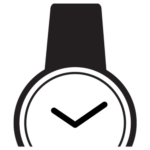Definition
A chronograph is a type of watch equipped with an additional timing function, allowing the measurement of independent time intervals without affecting the main function of displaying hours, minutes, and seconds. This function is usually activated and deactivated by external buttons next to the watch crown.
Origin
The word “chronograph” comes from the Greek “chronos” (time) and “graph” (writing), literally meaning “time writer”. The first chronograph was invented in 1816 by Louis Moinet for use in astronomical observations. Since then, the chronograph has evolved significantly in terms of accuracy and design.
Use
Chronographs are widely used in wristwatches, especially in sports and luxury models. They are popular among athletes, pilots, and automotive enthusiasts, due to their ability to measure lap times or specific time intervals.
Examples
The Omega Speedmaster, famous for being the “moonwatch”, is an iconic example of a chronograph.
Pilot watches, such as the Breitling Navitimer, offer advanced chronograph functions.
Synonyms
- “Watch with a timer” is a simplified description, but it does not capture all the functionalities of a chronograph.
- “Time counter” can be used, but it is less specific.
Related Terms
- “Tachymeter“: a scale used in some chronographs to measure speed.
- “Flyback“: a type of chronograph that allows for instant resetting of the time measurement.
Tips
When choosing a chronograph, consider the legibility and ease of use of the buttons and sub-dials.
To take care of a chronograph, it is important to regularly check the sealing of the buttons, especially in waterproof models.
Fun Facts
The chronograph was initially developed for astronomical and scientific purposes before becoming popular in wristwatches.
Some historical chronographs are highly valued by collectors, both for their accuracy and their association with historical events, such as space missions.
